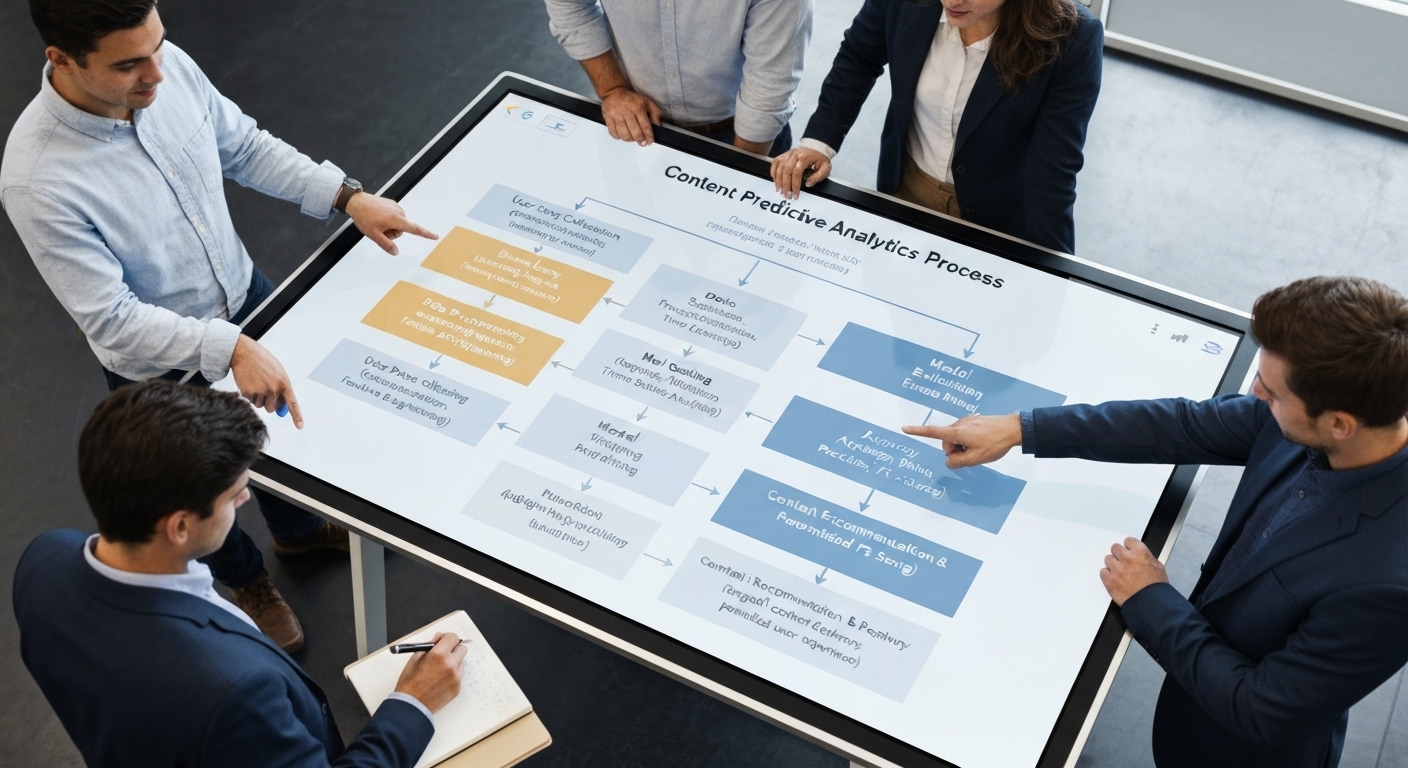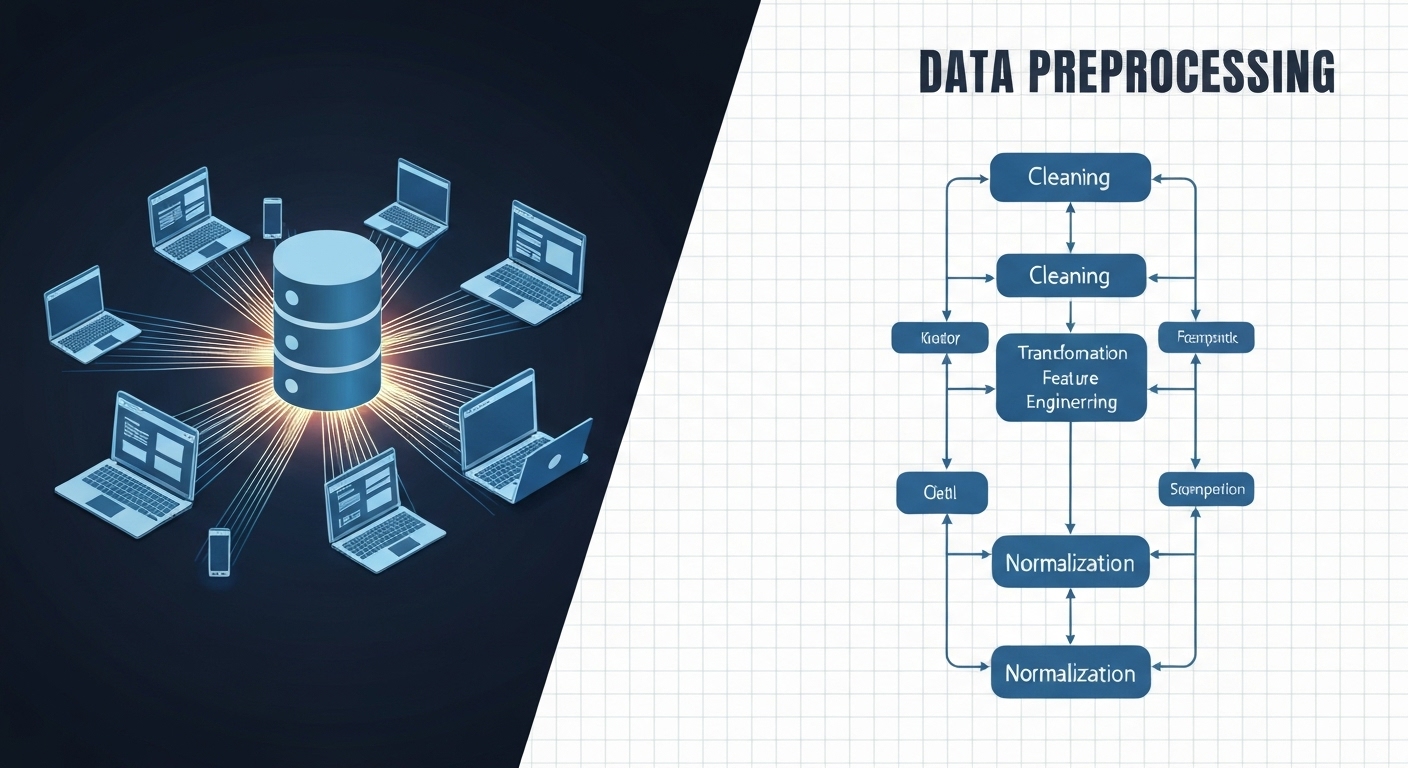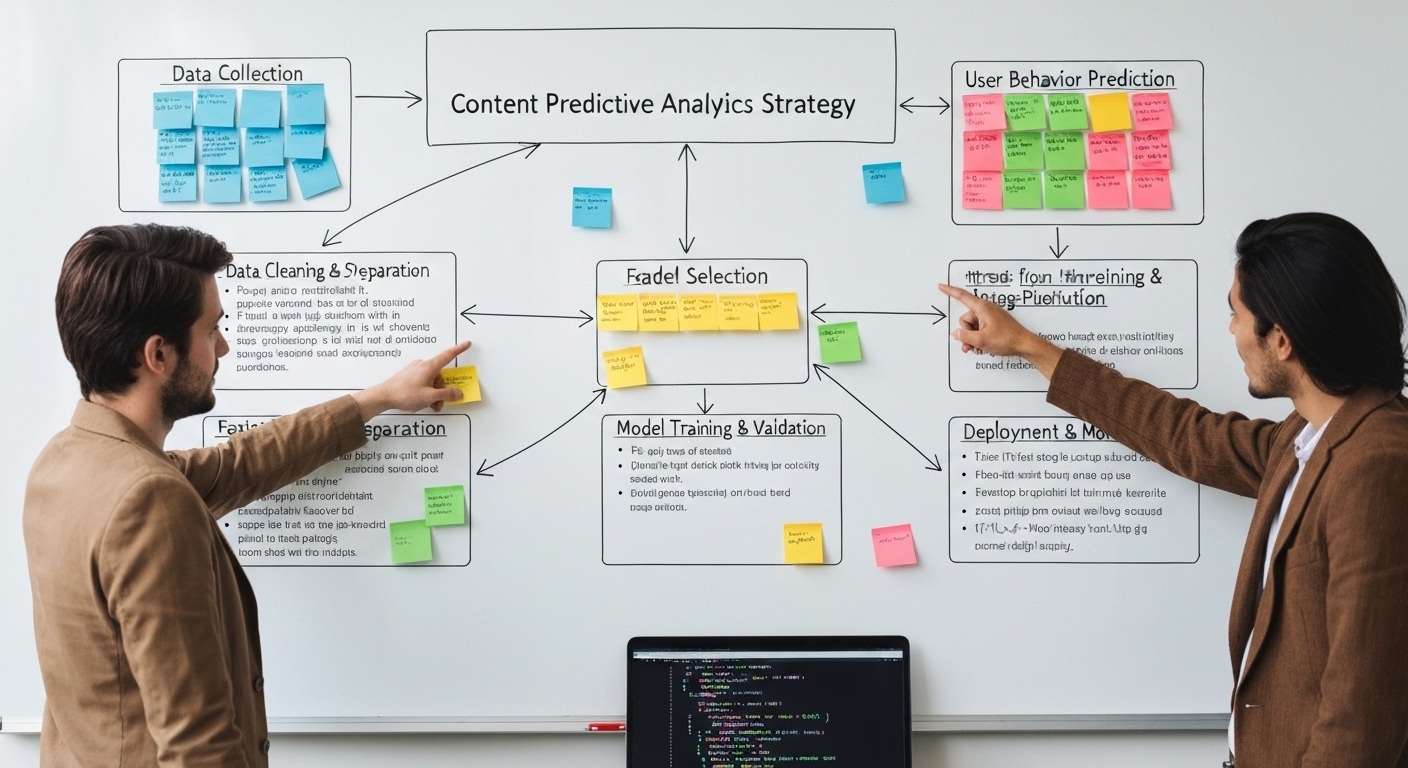Predictive Analytics for User Behavior : A Comprehensive Guide
Predictive analytics for user behavior is revolutionizing how businesses understand and interact with their customers. By leveraging data and algorithms, organizations can anticipate user actions, personalize experiences, and optimize their strategies for maximum impact. This article delves into the world of predictive analytics, exploring its applications, benefits, and the tools needed to implement it effectively.

Understanding Predictive Analytics for User Behavior
At its core, predictive analytics involves using historical data to identify patterns and predict future outcomes. When applied to user behavior, it allows businesses to foresee what users are likely to do, enabling proactive interventions and tailored experiences. This goes beyond simple reporting; it’s about anticipating needs and shaping interactions.
Key Concepts in User Behavior Analysis
- Data Collection: Gathering relevant data from various sources (website interactions, app usage, CRM systems).
- Data Preprocessing: Cleaning and transforming the data into a usable format.
- Model Building: Selecting and training a predictive model (e.g., regression, classification, clustering).
- Model Evaluation: Assessing the accuracy and reliability of the model.
- Deployment and Monitoring: Implementing the model and continuously monitoring its performance.
The models used in predictive analytics range from relatively simple statistical techniques to advanced machine learning algorithms. The choice of model depends on the complexity of the data and the specific prediction task. Flash Cloud provides excellent resources on selecting the appropriate models for various analytical tasks.

Applications of Predictive Analytics in User Behavior
The applications of predictive analytics for user behavior are vast and span across various industries. Here are some notable examples:
Predictive Marketing
Predictive marketing uses data to anticipate customer needs and deliver personalized marketing messages. This can include:
- Personalized Recommendations: Suggesting products or content that users are likely to be interested in.
- Targeted Advertising: Delivering ads to users based on their predicted behavior.
- Optimized Email Campaigns: Sending emails at the optimal time and with the most relevant content.
Churn Prediction
Churn prediction identifies users who are likely to stop using a product or service. This allows businesses to take proactive measures to retain them, such as offering special discounts or personalized support.

User Segmentation
User segmentation involves grouping users based on their behavior and characteristics. This allows businesses to tailor their strategies to different segments, improving engagement and conversion rates. Predictive analytics can enhance segmentation by identifying segments that are not immediately obvious.
Fraud Detection
In industries like finance, predictive analytics can be used to detect fraudulent activities by identifying unusual patterns in user behavior.
Benefits of Implementing Predictive Analytics
Implementing predictive analytics for user behavior offers numerous benefits to businesses:
Improved Customer Experience
By understanding user needs and preferences, businesses can deliver personalized experiences that enhance customer satisfaction and loyalty.
Increased Revenue
Predictive analytics can help businesses identify opportunities to increase revenue, such as cross-selling, upselling, and targeted promotions.
Reduced Costs
By predicting churn and preventing fraud, businesses can reduce costs associated with customer acquisition and loss.

Enhanced Decision-Making
Predictive analytics provides valuable insights that can inform strategic decision-making, allowing businesses to make more informed choices.
Tools for Predictive Analytics
Several tools are available for implementing predictive analytics, ranging from open-source libraries to commercial platforms. Some popular options include:
- R and Python: Open-source programming languages with extensive libraries for statistical analysis and machine learning.
- SAS: A commercial analytics platform with a wide range of features for data mining and predictive modeling.
- SPSS: Another commercial platform widely used in social sciences and business for statistical analysis.
- Tableau and Power BI: Data visualization tools that can be used to explore and present predictive analytics results.
Implementing a Predictive Analytics Strategy
Implementing predictive analytics for user behavior requires a strategic approach. Here are some key steps to consider:
Define Clear Objectives
What specific questions do you want to answer? What outcomes do you want to achieve? Defining clear objectives is crucial for guiding your analysis and ensuring that your efforts are focused on the most important areas.
Gather and Prepare Data
Collect relevant data from various sources and ensure that it is clean, accurate, and properly formatted. This may involve data cleaning, transformation, and integration.
Choose the Right Models
Select the appropriate predictive models based on your objectives and the characteristics of your data. Consider factors such as model complexity, interpretability, and accuracy. Machine learning for user behavior often involves algorithms like logistic regression, decision trees, and neural networks.
Evaluate and Refine
Evaluate the performance of your models and refine them as needed. This may involve adjusting model parameters, adding new features, or trying different algorithms. Continual evaluation and refinement are essential for maintaining the accuracy and reliability of your predictions.

Deploy and Monitor
Deploy your models into a production environment and continuously monitor their performance. Track key metrics such as accuracy, precision, and recall, and make adjustments as needed to ensure that your models are delivering the desired results.
The Future of Predictive Analytics for User Behavior
The field of predictive analytics for user behavior is constantly evolving, with new technologies and techniques emerging all the time. Some key trends to watch include:
Artificial Intelligence (AI) and Machine Learning
AI and machine learning are playing an increasingly important role in predictive analytics, enabling more sophisticated and accurate predictions. Deep learning, in particular, is showing great promise for complex user behavior analysis.
Real-Time Analytics
Real-time analytics allows businesses to analyze user behavior as it happens, enabling immediate interventions and personalized experiences. This is particularly valuable in industries such as e-commerce and online gaming.
Explainable AI (XAI)
As AI models become more complex, it is increasingly important to understand how they make decisions. Explainable AI aims to make AI models more transparent and interpretable, allowing businesses to gain deeper insights into user behavior. Understanding customer behavior prediction is becoming increasingly important.
Privacy and Ethical Considerations
As predictive analytics becomes more powerful, it is important to consider the ethical implications of using user data. Businesses need to ensure that they are collecting and using data responsibly and transparently, and that they are protecting user privacy. You can learn more about data privacy regulations from reputable sources like FTC.
Conclusion
Predictive analytics for user behavior is a powerful tool that can help businesses understand and engage with their customers more effectively. By leveraging data and algorithms, organizations can anticipate user actions, personalize experiences, and optimize their strategies for maximum impact. As the field continues to evolve, it is essential for businesses to stay informed about the latest trends and technologies, and to adopt a strategic approach to implementation. By doing so, they can unlock the full potential of predictive analytics and gain a competitive edge in today’s data-driven world. Whether it’s improving customer journey analytics, refining user segmentation, or implementing more effective predictive marketing, the possibilities are vast.
HOTLINE
+84372 005 899


